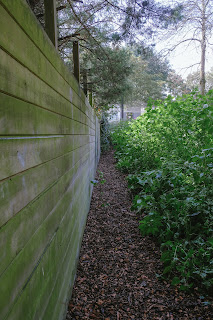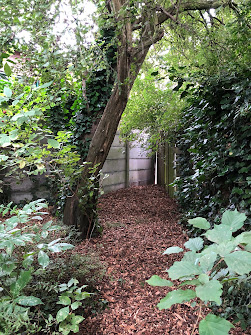from 'How lead can get into your soil' by the Center for Environmental Health (https://ceh.org/yourhealth/test-your-soil-for-lead/)
<<Lead can occur in soil naturally around a rate between 10-50 mg/kg, but because of past reliance on leaded products, contaminated sites may have lead levels anywhere from 150 mg/kg to 10,000 mg/kg. Although the widespread use of lead had been phased out over the years, lead does not break down over time so it’s still the most common type of soil contaminant in urban areas.
The main ways lead can contaminate your soil is through lead paint or leaded gasoline. Until the 1970s, lead paint was commonplace indoors and outdoors in both residents and commercial properties. It was basically everywhere! As paint ages, it can flake off and leave behind tiny debris that can integrate into soil. Car exhaust from leaded gasoline could have also contaminated soil with lead, especially if the soil was located next to a particularly busy road (2). Even though lead gasoline was phased out in the 1980s, lead can still be present in the soil.
While lead does not bioaccumulate in plants, it does hold very tightly onto clay or organic matter and, unless disturbed, is found in the top 1-2 inches of soil (2). This means that produce that grows lower to the ground, like root vegetables or leafy greens, might be covered in lead-contaminated soil.>>
<<Any result that shows lead above 150 mg/kg means you have high levels of lead in your soil and you should take action before planting and new plants.>>
-------------------------------------------------------------------------------------------------------------------------
Getting to know species in shared grounds garden. Species found at the green strip adjacent to the children’s play area:
Sycamore
Siberian Elm (can grow on polluted soils)
Common sowthistle
Stinging nettle
Common dandelion
Common plantain (cat: cua de rata)
Creeping buttercup (cat: botó d’or)
Ribwort, lamb’s tongue (cat: herba de cinc-nervis) (seeds are critical food sources for songbirds)
Persian Ivy (planted by the Gemeente Rotterdam)
Horseweed
English ivy
False spiraea
Pale smartweed
Black nightshade
Fool’s parsley (toxic, in picturethis it appears as not reported in Europe)
Coltsfoot (native to Europe, <<the flowers and leaves of coltsfoot have long been used to treat all kinds of respiratory disorders, but its use to prevent coughs and soothe the throat is well documented [...] Coltsfoot has also been used to treat diarrhea, to purify the blood, to stimulate metabolism, to cause diuresis and sweating, and topically as a wound treatment [...] Coltsfoot has been served cooked; raw in salads; fried in batter; to make beer, wine, and candy>> (From ‘Coltsfoot’ by Amanda Dailey and Melanie Johns Cupp.
Bitter dock (invasive, used in medieval folk medicine, roots can be used to make yellow-dye)
Pigweed
Tarragon?
Red elderberry
American black nightshade
Elder
Wild garlic?


.JPG)













































